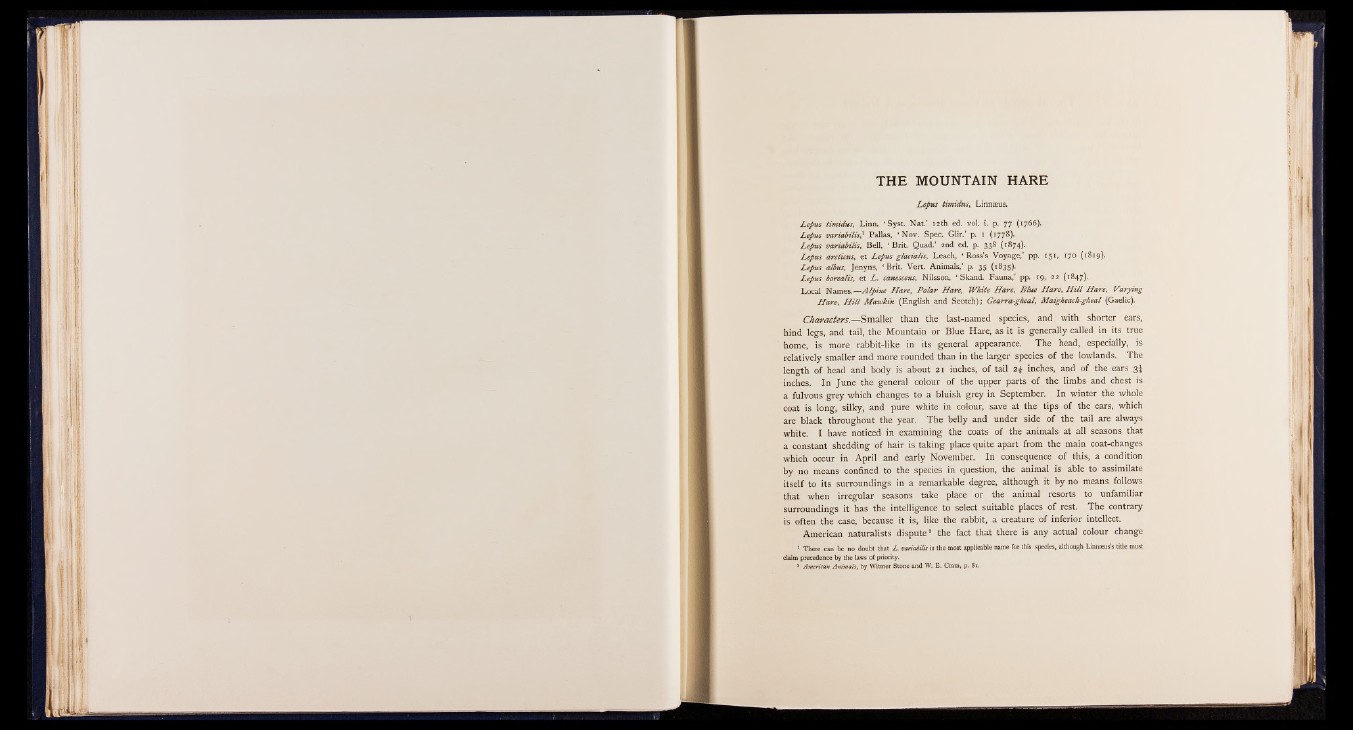
T H E M O U N TA IN H A R E
Lepus tim idus, Linnaeus.
Lepus tim idus, Linn. ‘ Syst. Nat.’ 12th ed. vol. i. p. 77 {1766).
Lepus variability Pallas. ‘ Nov. Spec. Glir.’ p. 1 ( 177S).
Lepus variability Bell, ‘ Brit. Quad.' 2nd ed. p. 338 (1874).
Lepus a rciicus, et Lepus g la cia lis, Leach, ‘ Ross’s Voyage,' pp. 151, 170 (1819).
Lepus albus, Jenyns, ‘ Brit. Vert. Animals,' p. 35 (1835).
Lepus borealis, etl®] canescens, Nilsson, ‘ Skand. Fauna,’ pp. 19, 22 (1847).
Local Names .— A lp in e H are, P o la r H are, W kite H a re, S lu e H a re, H ill H are, Varying
H a re, H ill M aw kin (English and Scotch); Gearra-gheal, M aigheach-gheal (Gaelic).
Characters.— Smaller than the last-named species, and with shorter ears,
hind legs, and tail, the Mountain or Blue Hare, as it is generally called in its true
home, is more rabbit-like in its general appearance. The head, especially, is
relatively smaller and more rounded than in the larger species of the lowlands. The
length of head and body is about 21 inches, of tail 2$ inches, and of the ears 3 j
inches. In June the general I f liu r of the upper parts of the limbs and chest is
a fulvous grey which changes to a bluish grey in September. In winter the whole
coat is long, silky, and pure white in colour, save at the tips of the ears, which
are black throughout the year. The belly and under side of the tail are always
white. I have noticed in examining the coats of the animals at all seasons that
a constant shedding of hair is taking place quite apart from the main coat-changes
which occur in April and early November. In consequence of this, a condition
by no means confined to the species in question, the animal is able to assimilate
itself to its surroundings in a remarkable degree, although it by no means follows
that when irregular seasons take place or the animal resorts to unfamiliar
surroundings it has the intelligence to select suitable places of rest. The contrary
is often the case, because it is, like the rabbit, a creature of inferior intellect.
American naturalists dispute2 the fact that there is any actual colour change
1 There can be no doubt that L . variabilis is the most applicable name for this species, although Linnaeus’s title must
claim precedence by the laws of priority.
* American Animals, by Witmer Stone and W. E. Cram, p. 81.